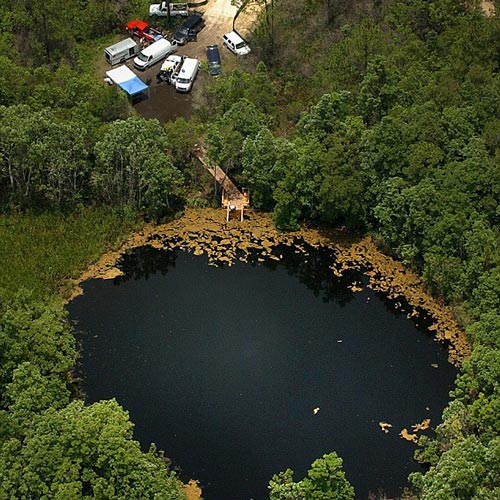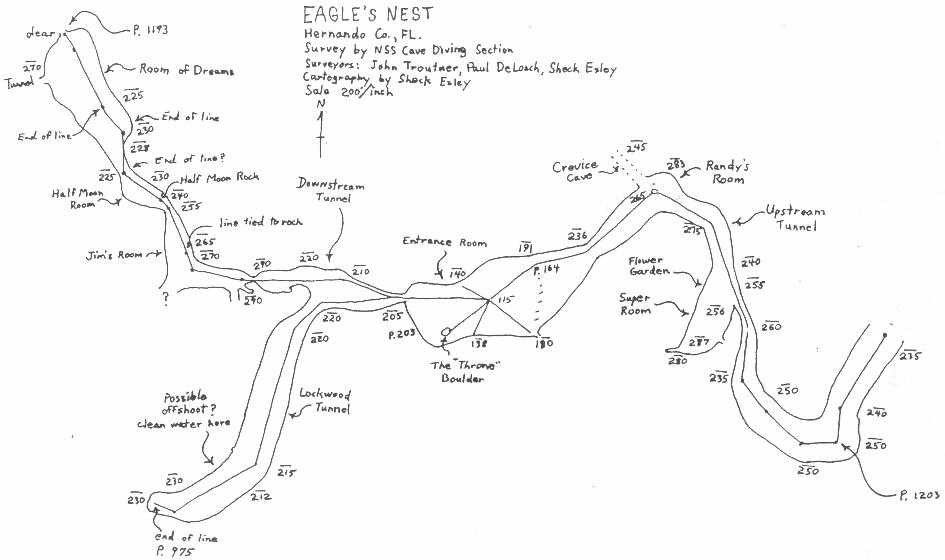Tragedy at Eagles Nest: Charles Odom’s Final Dive in Florida’s Most Dangerous Cave


| Incident Location | Diver Full Name |
|---|---|
| USA, Weeki Wachee, Florida, Eagles Nest Cave | Charles Odom |
On January 8, 2017, Charles Odom, 55, joined three other divers at Eagles Nest Cave, located in Weeki Wachee, Florida. Known in the diving community as the “Mount Everest of cave diving,” Eagles Nest is a complex system with deep vertical shafts, tight passageways, and massive chambers that challenge even elite cave divers.
Despite its beauty, Eagles Nest has claimed multiple lives. That day, it would claim another.
Odom, who was using a Hollis Prism rebreather, entered the water with his group. The plan was to complete a deep dive followed by a series of mandatory decompression stops on ascent—a routine but critical process for anyone diving to such depths. However, what was supposed to be a challenging yet rewarding dive ended in tragedy.
A Distress Signal in the Depths
As the team began their ascent toward the first decompression stop, something went wrong.
Odom, who had made it through the deep portion of the dive, signaled he was in trouble. One diver reported hearing a choking noise coming from Odom’s rebreather. He then switched to his backup open-circuit regulator, but within moments, he lost consciousness.
His teammates immediately tried to help. They held the regulator in his mouth, hoping to maintain his air supply. But they were still deep—around 40 feet—and had to balance saving their friend with completing their own decompression obligations.
Knowing time was critical, they decided to send Odom to the surface, hoping that the diver who had aborted earlier—still at the surface—could provide immediate assistance.
A Grim Surface Recovery
At the surface, the waiting diver saw Odom float up, motionless. He pulled him from the water and attempted resuscitation.
But it was too late.
Odom was cold, unresponsive, and frothing at the mouth. No pulse. No breathing. Emergency medical personnel arrived shortly after and pronounced him dead at the scene.
Medical Mystery: What Went Wrong?
The medical examiner ruled the cause of death as drowning, a common final result in scuba fatalities. However, the deeper cause was unclear.
An autopsy revealed that Odom had atherosclerosis and was obese, both risk factors for sudden cardiac events. But neither of these conditions alone could explain the drowning. Investigators believe it’s likely that Odom suffered a medical episode underwater, possibly a heart attack or stroke, leading to unconsciousness and the inhalation of water.
His rebreather was tested and found to be functioning properly, eliminating mechanical failure as a primary cause.
An Inexperienced Diver in a Dangerous System
What makes this story even more tragic is that Odom was not an experienced cave diver.
He began scuba diving in 2015, just two years before his death. He received his open-water and cavern certifications from an instructor at EZ Scuba Diving in Tampa, who trained him extensively in Eagles Nest itself—a decision that would later be heavily scrutinized.
Odom attempted to pursue more advanced cave diving certifications with a different instructor, but was not successful. Despite this, he continued to dive in one of the most advanced and technically demanding cave systems in North America.
Eagles Nest: Not a Place for Training
Eagles Nest Cave is no ordinary dive site. The entrance leads through a narrow chimney, which drops into a massive room known as the Ballroom. From there, passages extend into extremely deep and complex tunnels, reaching depths beyond 300 feet.
The National Speleological Society–Cave Diving Section (NSS-CDS) has warned divers for years: Eagles Nest is not a training site. There is no true cavern zone. Only fully certified, highly experienced cave divers should enter.
After the incident, a full review of Odom’s training history revealed major violations. His instructor had used Eagles Nest for training dives, against community safety recommendations and outside the scope of safe instructional practice.
As a result of the investigation, the instructor’s certifications were stripped.
A Preventable Death
Odom’s death sparked outrage and sorrow in the diving community. Many saw it as a preventable tragedy—the result of inadequate training, poor decision-making, and underestimating the risks of complex cave environments.
Though Odom was not reckless, he was unprepared for the demands of such an extreme dive site. The rebreather he used requires high levels of skill and situational awareness, especially at depth, and it’s unforgiving when something goes wrong.
In the end, Charles Odom’s dive wasn’t just another accident. It became a catalyst for discussion about diver training standards, cave access protocols, and the critical importance of knowing your limits.

